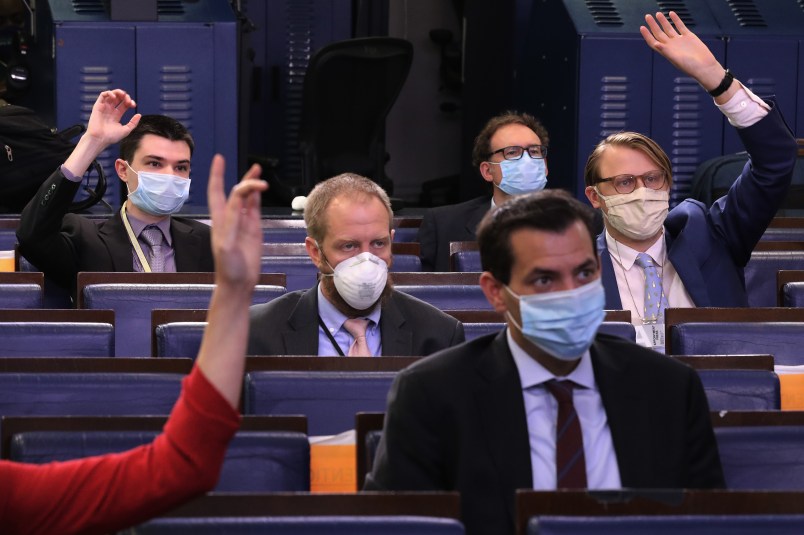Conventional wisdom and the balance of the public health community seems to have come round decisively in favor of masks as a key way to reduce transmission of COVID during the pandemic. In an interview with CNN, Anthony Fauci said that he wears a mask “when I’m in the public for the reasons that I want to protect myself and protect others, and also because I want to make it be a symbol for people to see that’s the kind of thing you should be doing.”
This is a good opportunity to revisit the mask as symbol, which is distinct from its immediate public health value but of course related to it.
Back in the early days of the pandemic, as I’ve discussed in other posts, most American public health experts doubted the efficacy of widespread use of masks but noted how it served as a potent social signal in Asian countries where masking was ubiquitous. It amounted to a very public, very visible, public statement that you take the public health crisis seriously and are conforming to the prescribed precautions to protect both yourself and the community at large. In the early days of the pandemic we heard from numerous North American or European expats in China or other countries in East Asia who pressed this signaling role. Back on March 9th, for instance, TPM Reader AK reported from Shanghai about how masking was public orthodoxy. Not just from government but with the population at large. ” I ran down to grab a delivery a few weeks ago without a mask, you would have thought I had horns based on the few people I ran into. Similar anecdotes from group chats elsewhere in the city.”
I have had analogous experiences of my own here in New York in recent weeks. On a few occasions I’ve had to meet with or have some interactions with strangers and I was certainly more at ease after I saw signals that they were cautious about COVID. (I’ve joked with my wife that I classify people I meet in public as COVID-cautious or COVID-skeptic.) They wore masks; they washed their hands; they talked about limiting travel outside the home. One of the socially acidic features of pandemics is that everyone else, in one key regard, really does become a threat. Any person could be a contagious carrier who is the one who infects you. This creates centrifugal forces in society that can breed isolation, conflict and even violence.
In the virgin soil epidemics that struck New England’s Algonquin Indians in the first decades of the 17th century, whole communities would be carried off at once. Others would disintegrate as those who were not yet sick would simply abandon rather than care for the sick in a desperate effort to escape the disease. Luckily COVID is not so contagious or deadly (we don’t know precisely which disease it was – possibly smallpox). But some dynamics are the same. Only compensatory actions can blunt these centrifugal forces. Public signals that you are doing your part in the group effort to combat the disease is one of those ways.
In this sense masking is both a visible symbol and also necessarily a collective effort. In recent weeks a number of studies and computer models have suggested that to get the real public benefit from masking, something like 80% of the population has to be using them. So basically we’re talking about peer pressure. You don’t walk down the street with no pants or cough in other people’s faces and during COVID you don’t go into social settings without a mask. Masks are the right thing to do because they (we think) slow the spread of the disease. They are also a visible signal that you are focused on doing the right thing – presumably not only masking but also the other practices – hand washing, reduced travel – that are not as visible.
There are parallels to the ideological battles over guns. Is it zero sum? Do I need as much firepower as possible to defend myself against all comers and overawe who I will? Or do we make a collective judgment that a society in which everyone is armed is neither desirable nor safe?
It is this social, solidaristic aspect of masking culture that has elevated it to the dimensions of a culture war in the United States. Yes, a lot of this is just Trump. Masks annoy him. He’s made it clear that mask wearing signals disloyalty. So everything that signals the public catastrophe or signals any resistance to going back to normal is an affront to Trump, Trumpism and thus now apparently many Trumpers. But it is the social and interdependent nature of masking that is, I think, at the root of the public resistance. It doesn’t sit well with a political culture that prizes unbridled individualism and power above all else. It signals both social interdependence and a defensive posture. If we were dominating the disease we wouldn’t be wearing masks. We are at best fighting it to a stand still at the moment.
With all Trump’s opposition, and the consistent line that masks are for followers or a sign of political correctness, what’s striking is that a number of ordinarily hyper-loyal Trumpers are not following along. Even as President Trump keeps signaling that masks are for losers, key Trump supporters like Sean Hannity are embracing the masking gospel. Indeed, a growing number of Republicans are – rightly – embracing masking as key to reopening the economy. Whether this will continue or whether they will fall in line is unclear. But the battle over masks goes beyond their effectiveness in limiting transmission. They cut into one of the country’s key ideological fissures in the age of Trump.






